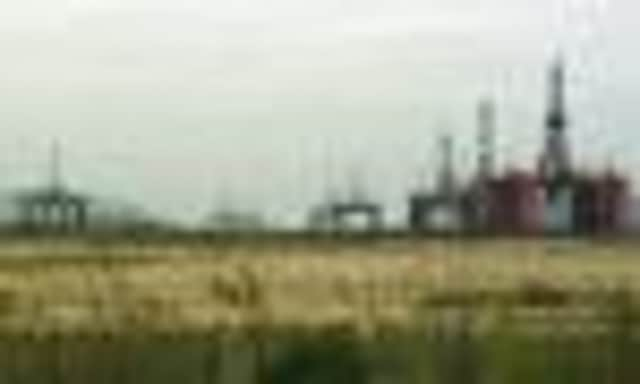Christine Jardine: Renewables trigger memories


There is a scene at the end of the film, Local Hero, where the oil executive MacIntyre returns to his apartment in the USA, removes some sea shells from his pocket and inhales the remainder of the aroma from Furness.
Cut to the telephone in the phone box in the Scottish village he has recently left. It begins to ring, and rings, and rings… What was it he was longing for? Was it the girl, the place or the simpler life he had fallen in love with?
Advertisement
Hide AdAdvertisement
Hide AdAnd had he engineered the survival of the community or was someone else the local hero?
It’s 30 years ago this weekend since the release, and the film, which made a star of the fishing village of Pennan, is reputedly Al Gore’s favourite movie and was recently included in the film critic and broadcaster Barry Norman’s 50 best British films of all time.
While a lot has changed for Scotland in the intervening years, the messages in Bill Forsyth’s allegory still resonate with us today. This time perhaps not with oil, but with another energy industry with huge potential for our economy.
I lived and worked in Aberdeen at the height of Pennan’s powers as a tourist attraction. Thousands of visitors were so keen to experience first-hand what they had seen in the film that the red phone box is still receives the most calls of any the country.
And many of us, especially those with connections to the North and North-east were convinced that Bill Forsyth was inspired by a particular community we love, and reflected our secret fears for what the impact might be of welcoming the oil industry and its potential wealth.
There were endless discussions over where Local Hero was really located. Was it Shetland, Aberdeenshire or somewhere else entirely?
Where exactly was the fictional community that Forsyth depicted which would simply be lifted off the map to be replaced a giant refinery?
It probably never mattered.
The fact that the fictional village of Furness conflated several locations – noteably Pennan on the east coast and Morar and Arisaig on the west – meant that it could be anywhere.
Advertisement
Hide AdAdvertisement
Hide AdFor me it was always reminded me of Nigg in Easter Ross. The tiny village that became the site of a massive fabrication yard and Europe’s largest dry dock.
In the 1970s excitement about the oil industry was almost tangible. Even as a child I was aware of it. Through that decade and the 1980s the development at Nigg transformed the local economy.
At its height the company, Highland Fabricators, employed 5,000 people, drawing its workforce from across the north of Scotland to create the giant structures on which our offshore industry depended.
But the last major contract was completed there in 1999, and for the first decade of the new century it lay largely deserted.
Gradually the friends I had seen build a comfortable lifestyle around work at the yard were moving away.
With each trip North it seemed that someone else was now working in the Far East or elsewhere, and a younger generation deprived of options was reverting to the historical route and leaving the Highlands.
But last weekend, driving back to Easter Ross after taking part in a Radio Scotland discussion which had involved the film I put Mark Knopfler’s haunting theme on the ipod and pondered what Bill Forsyth might say about where we are now.
The oil industry is still here and crucial to our economy, particularly in Aberdeenshire.
But now we have another opportunity in the Highlands.
Advertisement
Hide AdAdvertisement
Hide AdAlternative energy and the emerging renewables industry offers massive potential for growth.
And again at its centre is Nigg.
When the Chancellor of the Exchequer George Orsborne and Chief Secretary to the Treasury Danny Alexander announced the release of £100 million from the UK’s fossil fuel fund to the Scottish Government in 2011 it was no coincidence they chose the former fabrication yard as their location.
Now owned by the Global Energy Group it is a multi-user facility, serving not just the oil and gas industry but a range of energy sectors including renewables.
As well as that £100m for renewable energy projects the UK government has located the headquarters of its £3 billion Green Investment Bank in Edinburgh, and the Scottish Government is committed to supporting alternative energies.
Projects like the Marine Energy Park in the Pentland Firth and Orkney Waters are playing a key part in attracting developers from across the world to work in an area where a wave and tidal testing device is already well established at the European Marine Energy Centre (EMEC).
And Highlands and Islands Enterprise has worked hard to promote their area as a marine energy hub and bring investment to the North.
So are we benefitting from the lessons from the oil boom, or do we need a new local hero?
Three decades on would a follow-up about the green energy boom in Scotland tell a very different story?
That depends on who you think the eponymous local hero was.
Advertisement
Hide AdAdvertisement
Hide AdWas it the ambitious oil executive Macintyre who realised there was more to life? Or was it his eccentric billionaire boss Happer who helicoptered in and changed his mind, or the beach combing Knox who owned the shore and rather than sell persuaded Happer to site his ‘Institute’ offshore?
No. For me the hero was the hotelier and local businessman Urquhart. He was the one who managed the situation, pulled all the strings and in the end ensured the community was the winner.
I suspect that he would do the same thing again.